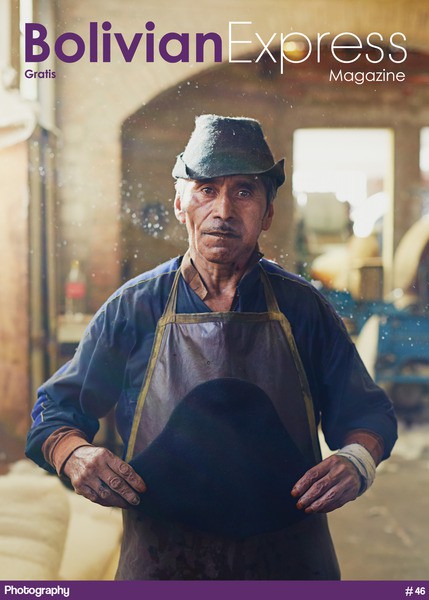
Photo: Juan Manuel Lobaton , courtesy of SINMOTIVO PHOTOGRAPHERS www.sonmotivo.com
Like most good stories, this project began on a night out. Initially, the objective was to share one photographer's perspective with another. The first step towards becoming a collective was the debut of the SinMotivo photography exhibition, showcasing a chorrellana of photographs reflecting diverse things about daily life.
Following the exhibition, SinMotivo published SinMotivo Vol.1, a free print magazine promoting the work of the collective. Five more editions followed, each with a different theme. Recruiting new members, SinMotivo transformed into a creative place to view, showcase and discuss photography. The collective began to organize and participate in various audio-visual showcases, festivals, curadurias and workshops. In addition, the collective published two photobooks; Ensayos Fotográficos (2011) and La Ciudad y la Mirada (2012). In 2010, SinMotivo also began producing Revista Diafragma a Bolivian photography magazine, in order to promote and support the craft of photography worldwide. All of these accomplishments led the collective to be featured in the first Bolivian photography book ever, Fotografiía Boliviana, edited by Accion Cultural, last year. Outside Bolivia, SinMotivo has been invited to participate in multiple exhibits, from Belgium and France to Australia, Mexico and Canada.
Currently, the SinMotivo photography studio is based in the Sopocachi neighborhood of La Paz. This space is more than an office. It’s a place that allows the collective to plan projects and host audio-visual activities, like lectures, presentations, workshops and exhibitions, as well as focus on commercial projects, ranging from documentaries to advertisements. Many ask: Why sin motivo? The phrase is a paceño idiom meaning ‘no reason’. It is also an oxymoron meaning ‘without light’: a play on words, similar to the well-known phrase sin querer queriendo, coined by the late, beloved comedian Roberto Gomez Bolaños: Chespirito.
SinMotivo is a group of photographers and filmmakers with different viewpoints and perspectives, mutually benefiting one another. By sharing a studio, the members share or absorb ideas and can receive or give constructive criticism. Although SinMotivo may have been envisioned from one perspective, the result is and will always be collective.
‘You know that Américo came? He's friends with Superman, Wonder Woman, the Fantastic Four and Iron Man . . . . Saxoman and the Casanovas, that’s my boy, brother.’
Forty-three-year old Américo Estevez Román, better known as ‘Saxoman’, is a beaming character from La Paz, Bolivia, who dedicates his life exclusively to music and taking care of his family.
Américo is the nephew of Fernando Román Saavedra, the songwriter who created the famous song ‘Collita’ in the 1950s—whom Américo remembers clearly from his youth, and who he says inspired him to follow the path of musical creativity. Nowadays, Américo keeps his name alive on the musical scene with an adopted style and at the location where he gets by: on the street. He says that he started playing there out of necessity, and on it has made a lot of connections.
Américo’s children, who call themselves the Casanovas, go to regular school in the morning; in the afternoon, driven by Américo or his wife, Nelly, they go to the Conservatorio Nacional de Música. Américo is convinced that they will be great musicians in the future, and he tries to provide them with all the moral and economic support that he lacked during his upbringing.
This photo essay shows the daily routine of Saxoman’s family, which has stayed together while Saxoman has plied his craft throughout the years, playing on the street and at private parties. Saxoman can be found on facebook by searching “Saxoman y los Casanovas”.
Photo: Carlos Sanchez Navas
Saxoman Playing his favourite instrument in the patio of his house, in wich he has lived since childhood
The women from Huancarani have to traverse four hours of mountain to get to Independencia, the nearest town, where you still can't get hold of a refrigerated soft drink. They don't have a Facebook account, they don't use the internet and they're probably better for it. Between two major urban centers, La Paz and Cochabamba, and nestled in the Cordillera de Cocapata, the people of Huancarani cling to a rural existence that is strongly linked to subsistance agriculture, sheep herding, and what they do best: weaving. The age old techniques are richly based in natural dyes, highly complicated patterns, and hours and hours of hard work. By the time they deliver a finished chuspa, a small bag traditionally used to carry coca leaves that stave off hunger for a knock-down drag-out hike or an overtime shift at the mines, the female weavers have spent around 35 hours coordinating the effort. Time stands still and shucking the fur, or hiking down to the river to wash the wool seems like the perfect way to spend the day.
Every city in Bolivia is comprised of migrants, whether from the altiplano or the oriente, and their reality is not that far removed from that of the women of Huancarani; they maintain the traditions that continue to make Bolivia one of the most unique countries on the planet.
Learn more about the women photographed above and how to support their artisan weavings at www.pazaboliviablog.com.
Photo: Jonathan Mcacrthy

 Download
Download





















